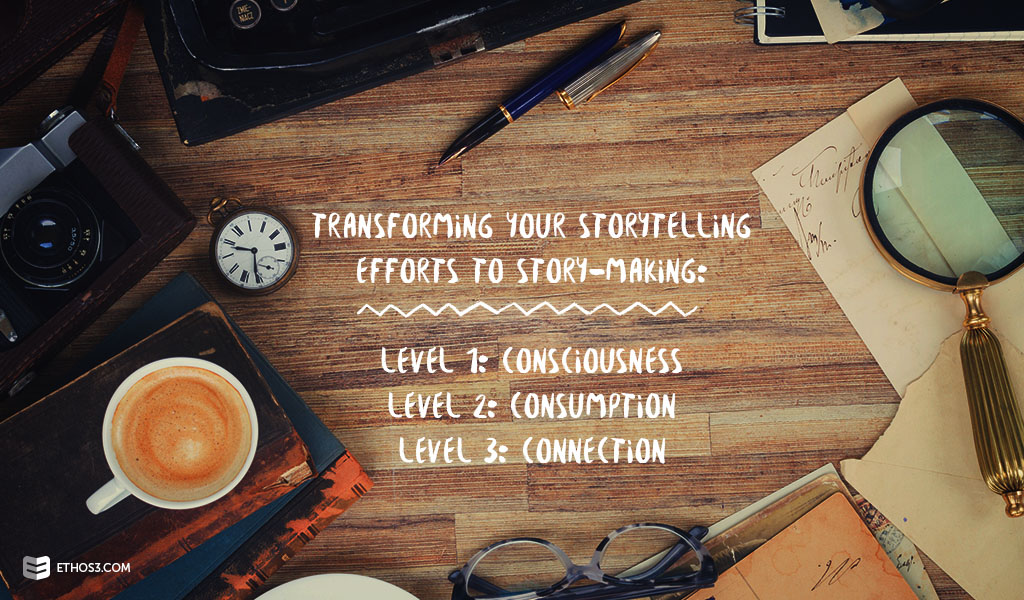For the past several years, content marketers and creators have praised the impact of storytelling in their writing. After all, stories start a sensation called neural coupling in the brains of audience members. When the brain waves of both listener and storyteller align, the phenomenon occurs. While presentation storytelling engages your audiences, experts claim that story-making is more in line with what content consumers desire. Story-making involves shifting your content focus towards experiences over material items. It requires greater development of interactive moments and campaigns – creating a comprehensive narrative journey. There are 3 levels of completing the process of transforming your presentation storytelling efforts to presentation story-making: Consciousness, Consumption, and Connection. Let’s explore each aspect of the process.

Level 1: Consciousness
When you use a customer/client experience story or a company origin story to deliver a message to an audience, you are effectively implementing presentation storytelling into your narrative. You are making the audience aware of an issue or a solution through a story that mirrors their own.
Level 2: Consumption
If you use the presentation storytelling techniques to facilitate a discussion or propose a question, you have passed through the next level of story-making transformation. You push your audience members to consume your message and formulate distinct thoughts around your concepts.
Level 3: Connection
A brand, company, or presenter that encourages the audience to craft stories that are uniquely theirs has reached story-making status. Following a presentation event, are you prompting your audience to create stories under your brand or company’s umbrella? Are you providing a template through your external communications for what an experience with your product or service looks like? And then are you following that effort up with a call for others to share their experiences? For example, in our Badge Presentation Training, the presenter asks the audience to sketch a picture of themselves presenting – what they look like, where they are in relation to the projector, how their arms are positioned, etc. An interactive experience as simple as drawing forms a connection between audience and presenter. It establishes greater meaning of your message in the minds of your audience.
A presenter who constantly scans and analyzes the presentation audiences before them will be more in tune with the changes in particular need and preference changes. By creating your presentation conversations with interaction in mind, you can inspire your content consumers to participate in your larger story.
Related Posts:
How To Make An Emotional Connection In Your Presentation
Never Stop Telling Stories: Inspiration from LGBTQ Women in America
